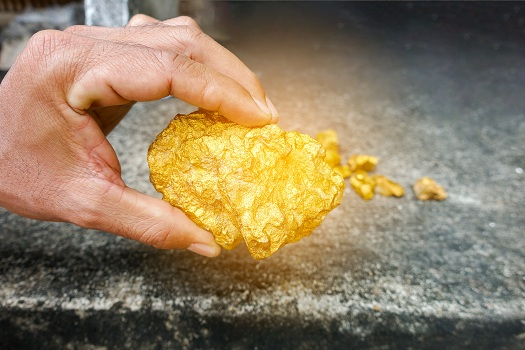Guide to Precious Metals Used in Making Jewelry
Jewelry and precious metals often go hand in hand—or finger, wrist, or ankle. In fact, precious metals are often used to add style and unique features to an assortment of wearable decorative pieces. The goal is typically to provide added shine to a particular piece, which is why these “noble metals” with a natural luster are often used in various jewelry-making processes. Below, the experts from First National Bullion, Carlsbad residents’ best choice when they need advice about investing in gold, silver, platinum, and palladium, go over some of the more common precious metals used in jewelry.
Gold
Since the days of ancient Egypt and possibly even earlier, gold has been a popular choice for decorative adornment. Today, gold of varying quality remains a popular precious metal used in all types of jewelry. Extremely soft when pure, gold is often blended with other alloys or metals to produce an assortment of color variations that allow for more design possibilities.
Silver
In pure form, silver is also soft and very malleable, which is why it’s an equally popular precious metal for jewelry, and it’s used in just as many pieces as gold. It has a natural silvery-white hue with slight pink undertones that adds to its appeal. Silver jewelry does show scratches, but it can be polished.
Platinum
Presenting an assortment of visually appealing undertones, platinum is a dense, malleable precious metal that’s resistant to wear. It’s a desirable choice for jewelry because it can be polished multiple times without significant fading. However, it does add noticeable weight to jewelry, since it’s an extremely dense precious metal. For instance, a platinum ring is nearly 60 percent heavier than a 14k gold ring.
Palladium
Part of the platinum family of precious metals, palladium has a natural silvery-white hue with attractive gray undertones. It’s unique in the jewelry world in that it’s often used in pure or nearly pure form in most of the pieces it’s made with. While it can be difficult to work with during the jewelry-making process, palladium is resistant to wear and typically lighter than platinum. Also, it eventually dulls to a satin-toned finish over time.
Rhodium
Also in the platinum family, rhodium is sometimes used to plate jewelry made with other metals or alloys. This is done to provide additional protection against scratching and add a reflective quality to pieces. It’s often used to plate silver or light-hued gold jewelry, partly since pure rhodium is difficult to mold due to its high melting temperature.
Iridium
Another member of the platinum group, iridium is an extremely rare precious metal. It’s not used for jewelry all that much due to its rarity and because it’s brittle and extremely hard. It wasn’t until 2009 that the first pure iridium piece was made, and it’s more common for this precious metal to be combined with other metals to make rings and earrings.
Valuing Precious Metals in Jewelry
It’s not as easy to assign a value to precious metals used in jewelry as it is for the same metals in bar, ingot, or coin form. With jewelry, there are many factors that go into determining value, including the actual percentage of the precious metals used, the overall condition of the piece, and any unique design characteristics.
Jewelry and other items made from precious metals can be extremely reliable long-term investments. If they’re building their investment portfolios and looking for the best place to purchase precious metals, including silver bars and gold coins, Carlsbad collectors should reach out to the trustworthy professionals at First National Bullion. We can answer all your questions and help you find all the information you need on how precious metals can be great investments. Give one of our experienced dealers a call today at (760) 253-8072.
The statements made in this blog are opinions, and past performance is not indicative of future returns. Precious metals, like all investments, carry risk. Precious metals and coins may appreciate, depreciate, or stay the same in cash value depending on a variety of factors. First National Bullion does not guarantee, and its website and employees make no representation, that any metals for sale will appreciate sufficiently to earn the customers a profit. The decision to buy, sell, or borrow precious metals and which precious metals to purchase, borrow, or sell are made at the customer’s sole discretion.


